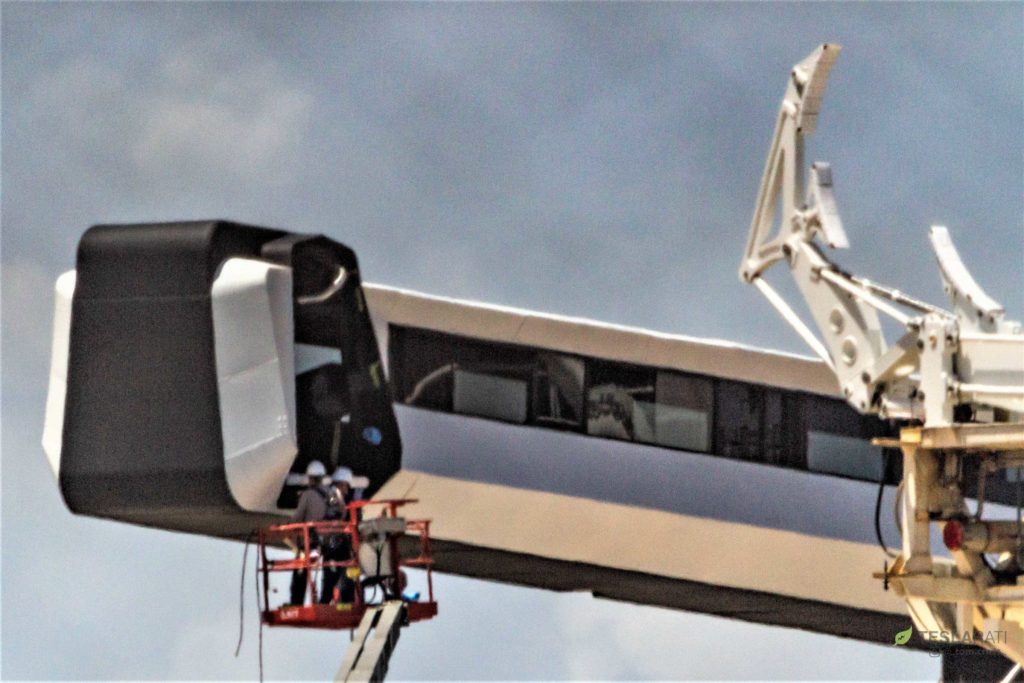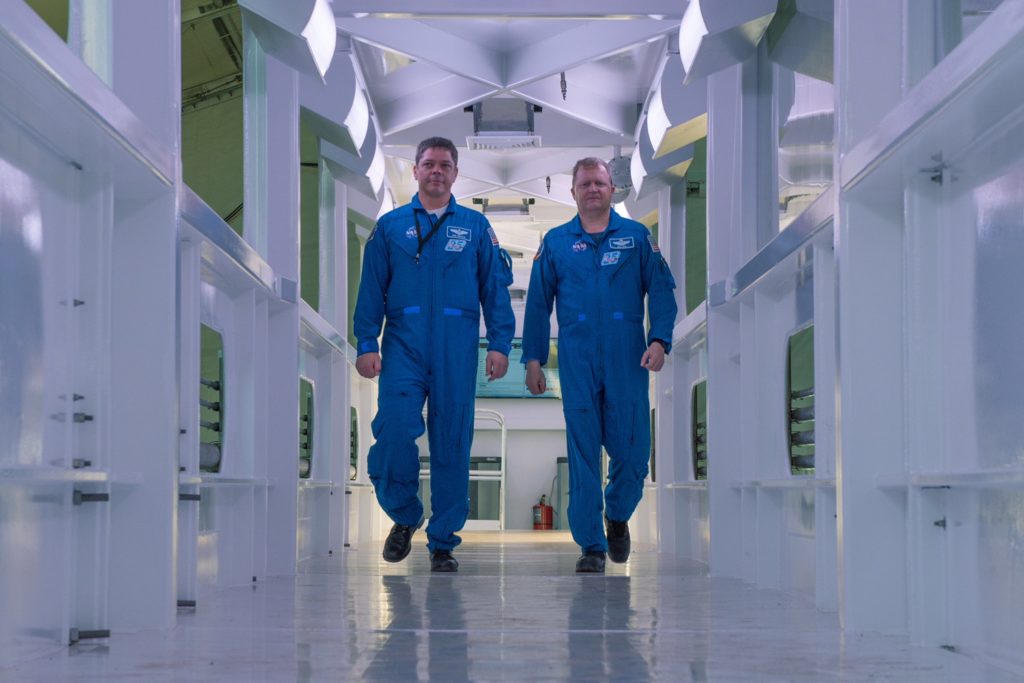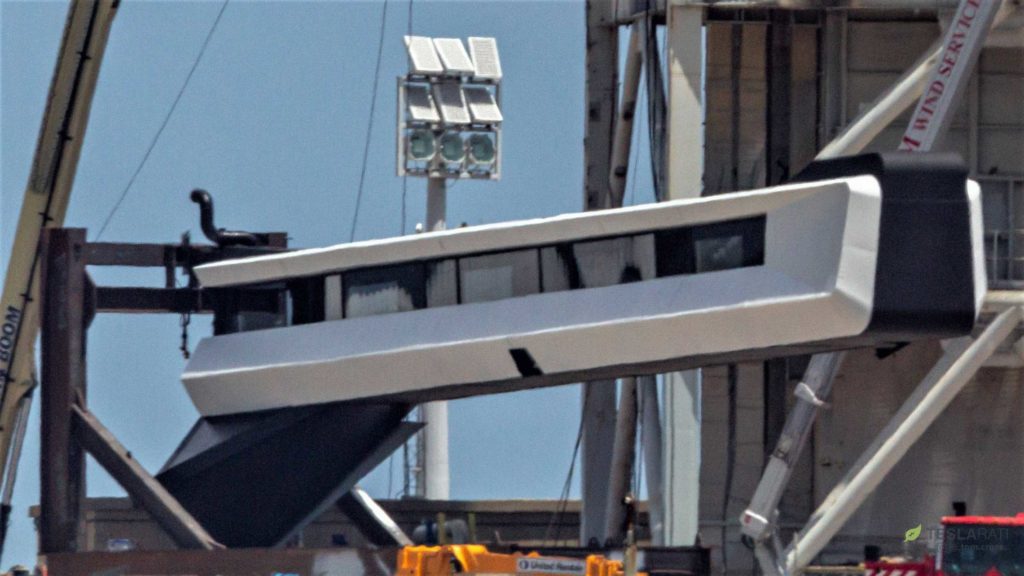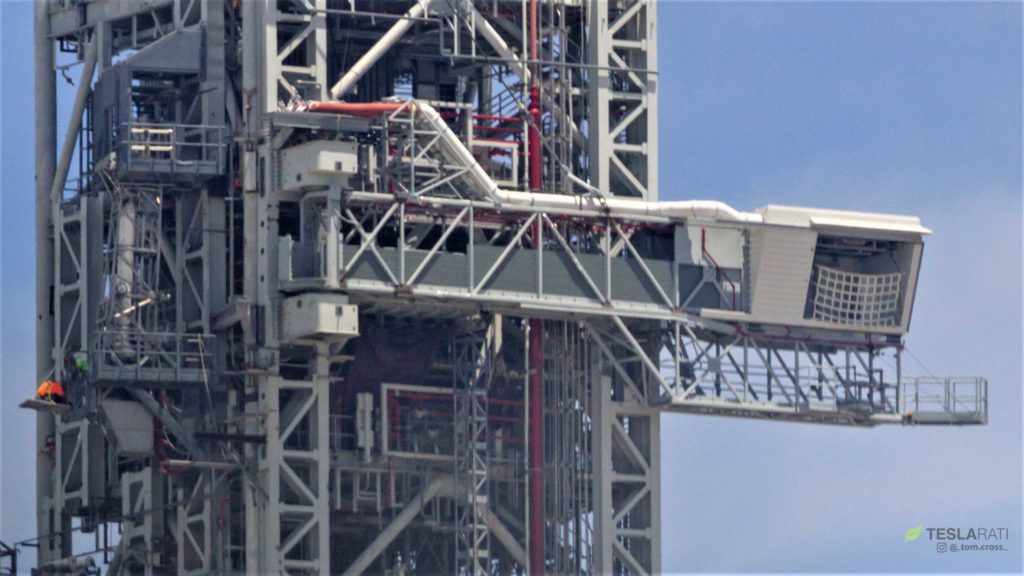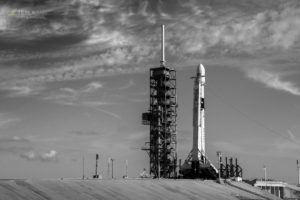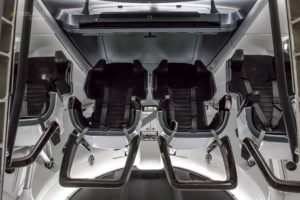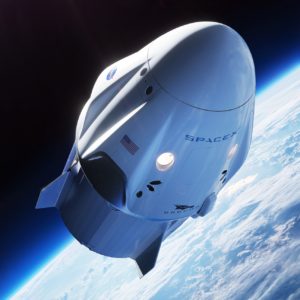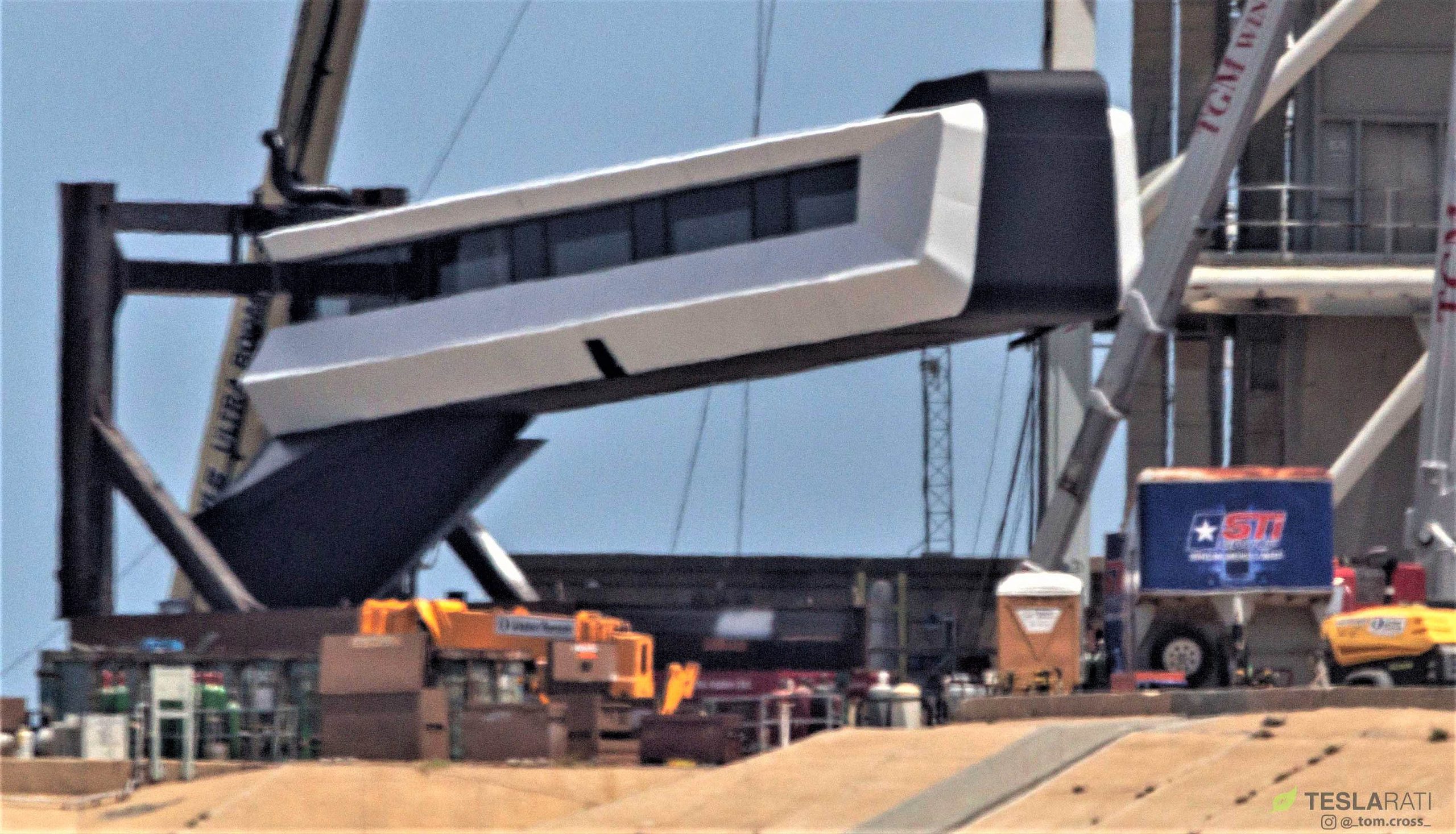
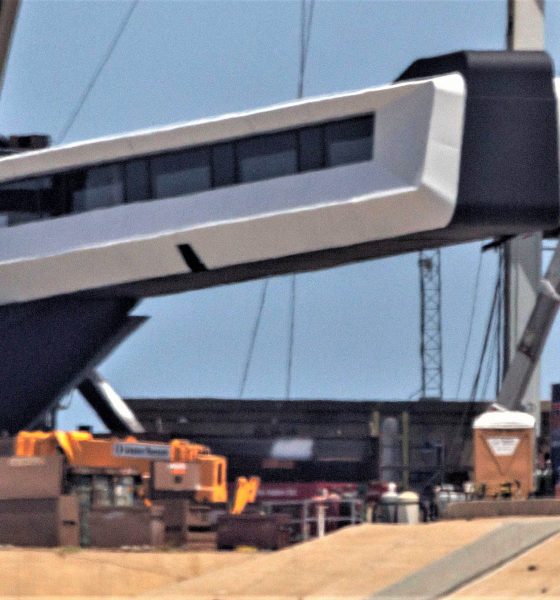
SpaceX
SpaceX’s futuristic Crew Dragon astronaut walkway is ready for US human spaceflight revival
SpaceX has publicly revealed the sleek, minimalist design of the access arm that NASA astronauts will soon use to board Crew Dragon spacecraft, bringing to an end more than half a decade of U.S. dependency upon non-native rockets and space agencies to transport crew to the International Space Station.
After several months of concerted effort in a tent located on Pad 39A property, SpaceX engineers, welders, and technicians have nearly completed the most critical portion of the launch facility modifications and upgrades necessary to return the pad’s human spaceflight capabilities. Known as a Crew Access Arm (CAA), SpaceX will likely complete installation of the Arm by the end of August, wrapping up what is by far the most visible step yet towards returning astronauts to the ISS on American rockets and spacecraft.
- SpaceX has rolled its completed Crew Dragon Access Arm into position and is just days away from installing the sleek arm. 08/16/18 (Tom Cross)
- The interior of SpaceX’s Crew Access Arm. (NASA)
- SpaceX has rolled its completed Crew Dragon Access Arm into position and is just days away from installing the sleek arm. 08/16/18 (Tom Cross)
- Pad 39A’s Space Shuttle access arm seen before removal. (Tom Cross)
SpaceX’s first flightworthy Crew Dragon spacecraft are currently in various late stages of production, assembly, and integration in pursuit of an uncrewed orbital debut no earlier than (NET) November 2018 and its first crewed demonstration flight as early as April 2019. The first Demonstration Mission (DM-1) Crew Dragon capsule is already at SpaceX’s Florida processing facility, while its trunk/service module and Falcon 9 Block 5 rocket could ship to Florida as early as late August or early September.
Boeing has already installed their own Starliner spacecraft Crew Access Arm at United Launch Alliance’s own LC-41 launch facility, although the design is definitely far more traditional than SpaceX’s comparatively wild departure from previous CAAs.
Prior to SpaceX’s lease of Kennedy Space Center’s Launch Complex 39A (LC-39A), the pad operated for the full length of NASA’s Space Shuttle program, supporting dozens of launches of the fundamentally flawed – albeit iconic and awe-inspiring – vehicle. Still, Pad 39A is most famous for the critical role it played in NASA’s Apollo Program, where it supported nearly all Saturn V launches and thus all but one (Apollo 10) of the nine crewed mission to the Moon, Apollo 8, and Apollo 11 through 17.
SpaceX and CEO Elon Musk are cognizant of this incredibly rich history, and it’s probable that humans will once again return to the Moon (at least its gravitational sphere of influence) from Pad 39A, but this time atop a SpaceX rocket and spaceship. A sister facility known as LC-39B, built to ensure two operational pads for the Space Shuttle, is also slowly tracking towards the debut of a different rocket targeting human exploration around the Moon, NASA’s Space Launch System (SLS).
- SpaceX’s first Block 5 Falcon 9 prepares for its debut launch from Pad 39A, May 2018. (Tom Cross)
- SpaceX’s Crew Dragon simulator, a near-exact replica of the spacecraft’s actual cabin. (Pauline Acalin)
- In this illustration, a SpaceX Crew Dragon spacecraft is shown in low-Earth orbit. (SpaceX)
SpaceX President Gwynne Shotwell recently reaffirmed that a 2017 contract (money in hand) to send two private individuals around the Moon is still alive and well, although Musk has also noted that that lunar tourism mission will likely be flown with BFR and BFS, pushing it into the early 2020s at the earliest. While several years out and taking a definite back seat to Crew Dragon’s safe and reliable debut and operation in low Earth orbit, it’s clear that a separate human spaceflight race is simmering in the background, pitting public efforts against private efforts in a bid to once again send humans to the Moon.
For prompt updates, on-the-ground perspectives, and unique glimpses of SpaceX’s rocket recovery fleet check out our brand new LaunchPad and LandingZone newsletters!

Elon Musk
Elon Musk gives nod to SpaceX’s massive, previously impossible feat
It was the booster’s 30th flight, a scenario that seemed impossible before SpaceX became a dominant force in spaceflight.
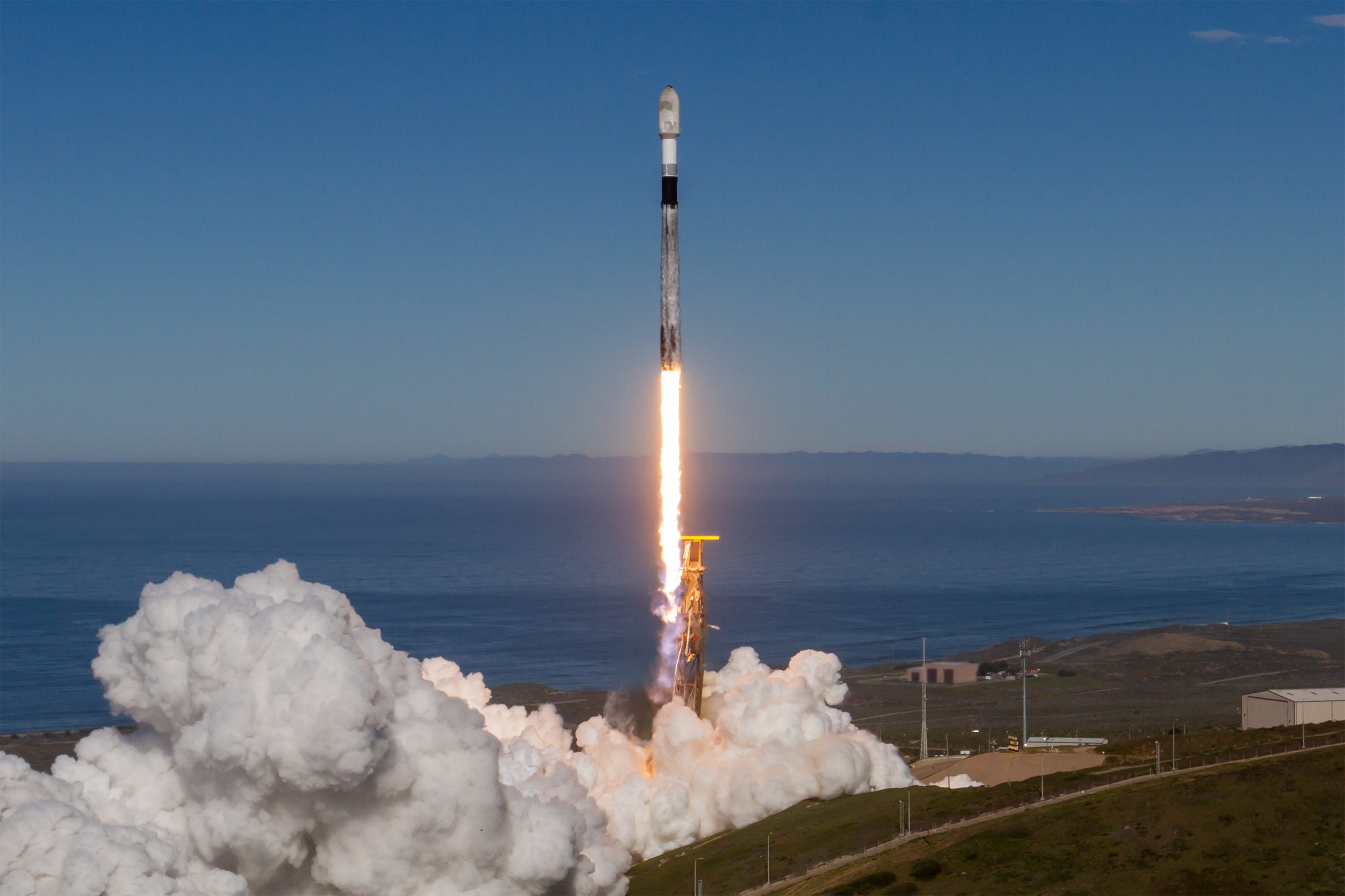
Elon Musk gave a nod to one of SpaceX’s most underrated feats today. Following the successful launch of the Transporter-15 mission, SpaceX seamlessly landed another Falcon 9 booster on a droneship in the middle of the ocean.
It was the booster’s 30th flight, a scenario that seemed impossible before SpaceX became a dominant force in spaceflight.
Elon Musk celebrates a veteran Falcon 9 booster’s feat
SpaceX completed another major milestone for its Smallsat Rideshare program on Friday, successfully launching and deploying 140 spacecraft aboard a Falcon 9 from Vandenberg Space Force Base. The mission, known as Transporter-15, lifted off two days later than planned after a scrub attributed to a ground systems issue, according to SpaceFlight Now. SpaceX confirmed that all payloads designed to separate from the rocket were deployed as planned.
The Falcon 9 used for this flight was booster B1071, one of SpaceX’s most heavily flown rockets. With its 30th mission completed, it becomes the second booster in SpaceX’s fleet to reach that milestone. B1071’s manifest includes five National Reconnaissance Office missions, NASA’s SWOT satellite, and several previous rideshare deployments, among others. Elon Musk celebrated the milestone on X, writing “30 flights of the same rocket!” in his post.
Skeptics once dismissed reusability as unfeasible
While rocket landings are routine for SpaceX today, that was not always the case. Industry veterans previously questioned whether reusable rockets could ever achieve meaningful cost savings or operational reliability, often citing the Space Shuttle’s partial reusability as evidence of failure.
In 2016, Orbital ATK’s Ben Goldberg argued during a panel that even if rockets could be reusable, they do not make a lot of sense. He took issue with Elon Musk’s claims at the time, Ars Technica reported, particularly when the SpaceX founder stated that fuel costs account for just a fraction of launch costs.
Goldberg noted that at most, studies showed only a 30% cost reduction for low-Earth orbit missions by using a reusable rocket. “You’re not going to get 100-fold. These numbers aren’t going to change by an order of magnitude. They’re just not. That’s the state of where we are today,” he said.
Former NASA official Dan Dumbacher, who oversaw the Space Launch System, expressed similar doubts in 2014, implying that if NASA couldn’t make full reusability viable, private firms like SpaceX faced steep odds.
Elon Musk
SpaceX’s Starship program is already bouncing back from Booster 18 fiasco
Just over a week since Booster 18 met its untimely end, SpaceX is now busy stacking Booster 19, and at a very rapid pace, too.
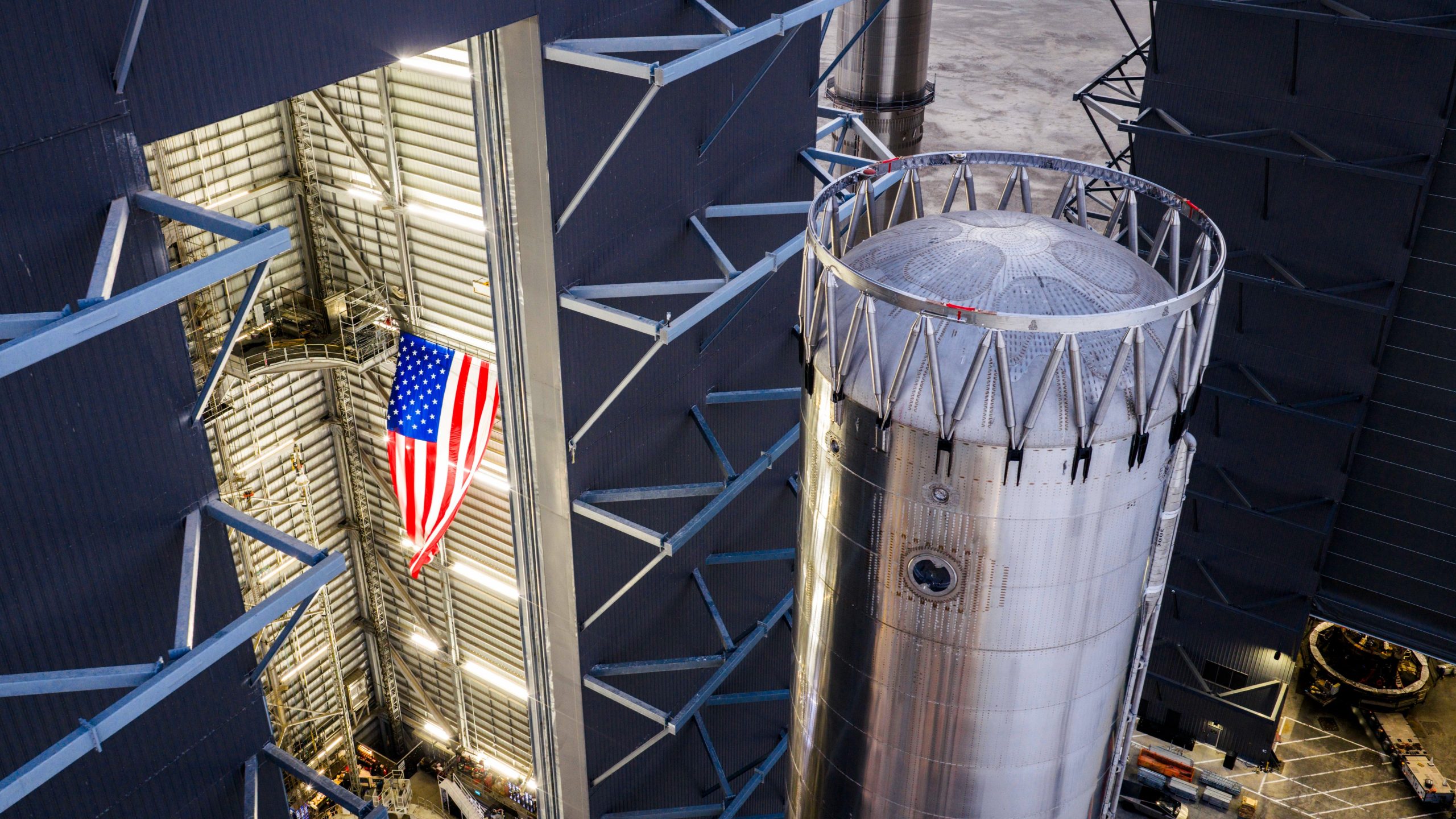
SpaceX is already bouncing back from the fiasco that it experienced during Starship Booster 18’s initial tests earlier this month.
Just over a week since Booster 18 met its untimely end, SpaceX is now busy stacking Booster 19, and at a very rapid pace, too.
Starship V3 Booster 19 is rising
As per Starbase watchers on X, SpaceX rolled out the fourth aft section of Booster 19 to Starbase’s MegaBay this weekend, stacking it to reach 15 rings tall with just a few sections remaining. This marks the fastest booster assembly to date at four sections in five days. This is quite impressive, and it bodes well for SpaceX’s Starship V3 program, which is expected to be a notable step up from the V2 program, which was retired after a flawless Flight 11.
Starship watcher TankWatchers noted the tempo on X, stating, “During the night the A4 section of Booster 19 rolled out to the MegaBay. With 4 sections in just 5 days, this is shaping up to be the fastest booster stack ever.” Fellow Starbase watcher TestFlight echoed the same sentiments. “Booster 19 is now 15 rings tall, with 3 aft sections remaining!” the space enthusiast wrote.
Aggressive targets despite Booster 18 fiasco
SpaceX’s V3 program encountered a speed bump earlier this month when Booster 18, just one day after rolling out into the factory, experienced a major anomaly during gas system pressure testing at SpaceX’s Massey facility in Starbase, Texas. While no propellant was loaded, no engines were installed, and no one was injured in the incident, the unexpected end of Booster 18 sparked speculation that the Starship V3 program could face delays.
Despite the Booster 18 fiasco, however, SpaceX announced that “Starship’s twelfth flight test remains targeted for the first quarter of 2026.” Elon Musk shared a similar timeline on X earlier this year, with the CEO stating that “ V3 is a massive upgrade from the current V2 and should be through production and testing by end of year, with heavy flight activity next year.”
Considering that Booster 19 seems to be moving through its production phases quickly, perhaps SpaceX’s Q1 2026 target for Flight 12 might indeed be more than feasible.
Elon Musk
Elon Musk shares SpaceX’s directive that destroys a prevalent media narrative
Musk’s comments followed Starlink’s initiatives for people affected by severe flooding in Indonesia and Cyclone Ditwah in Sri Lanka.
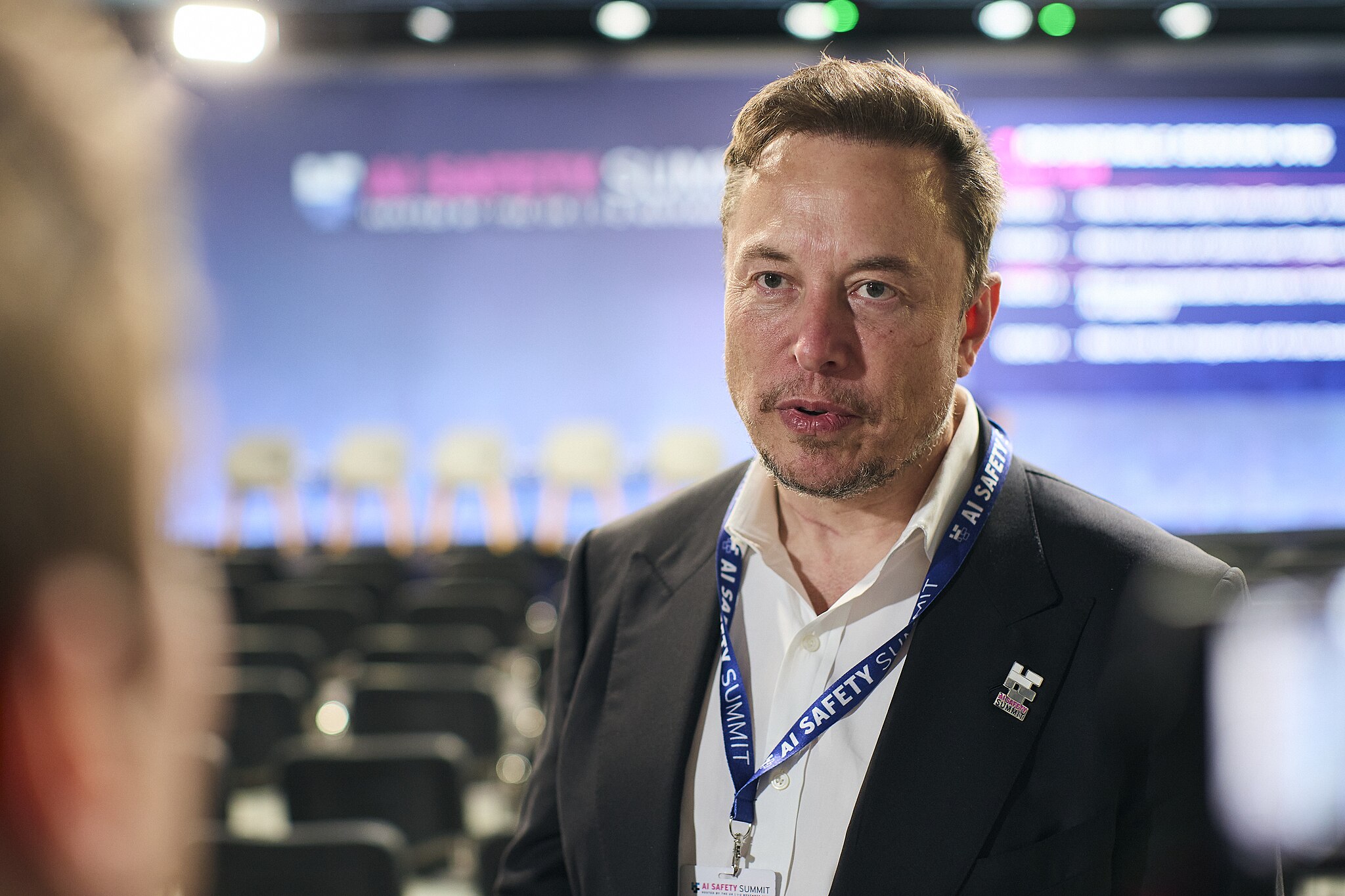
Elon Musk recently shared SpaceX’s standing policy to offer free Starlink service during natural disasters worldwide, highlighting the company’s commitment to pursue aid over profit during times of need.
Musk’s comments followed Starlink’s initiatives for people affected by severe flooding in Indonesia and Cyclone Ditwah in Sri Lanka.
Starlink activates free service in Indonesia and Sri Lanka
Starlink recently announced free service for those impacted by severe flooding in Indonesia’s Sumatra region, partnering with the government to deploy terminals rapidly to the hardest-hit areas. The offer extends to new and existing customers through December, restoring connectivity in zones where traditional networks have failed due to infrastructure damage.
Musk quoted the post on X, writing, “SpaceX standard policy is to make Starlink free whenever there is a natural disaster somewhere in the world. It would not be right to profit from misfortune.”
Starlink extended the same relief to Sri Lanka amid Cyclone Ditwah, coordinating with local authorities for additional support. The cyclone battered the island nation with heavy rains and winds, disrupting communications for thousands. Free access also lasts until year-end, emphasizing Starlink’s role in bridging gaps during crises.
“For those affected by the severe flooding in Indonesia and Sri Lanka in the aftermath of Cyclone Ditwah, Starlink is providing free service to new and existing customers through the end of December 2025. We’re also working with the Indonesian government to rapidly deploy terminals and restore connectivity to the hardest-hit areas on Sumatra, as well as with the Sri Lankan government to provide additional assistance,” Starlink wrote in a post on its official website.
Musk’s companies routinely provide aid
Musk’s firms have a track record of providing critical support in crises, often without fanfare, challenging portrayals of him as a comic book villain intent on enriching himself on the backs of a suffering populace. In January 2024 alone, Tesla opened Superchargers for free in Japan’s Hokuriku region after a magnitude 7.6 earthquake killed at least 55 and injured hundreds.
Similar efforts include Starlink deployments for the 2023 Maui wildfires, 2024 Hurricane Helene in North Carolina, and floods in Texas, where the service was used to help facilitate emergency coordination. These actions, which total millions in waived fees and logistics, demonstrate a proactive ethos among Musk’s companies, with Musk noting in past interviews that such aid stems from engineering solutions over optics.
The initiatives also provide a direct rebuttal of Musk’s characterization on mainstream media, which tends to lean negatively. This has become much more notable in recent years as Musk adopted more conservative policies. These negative sentiments came to a head earlier this year when Tesla stores, vehicles, and even some owners, were attacked during waves of anti-Tesla protests.
